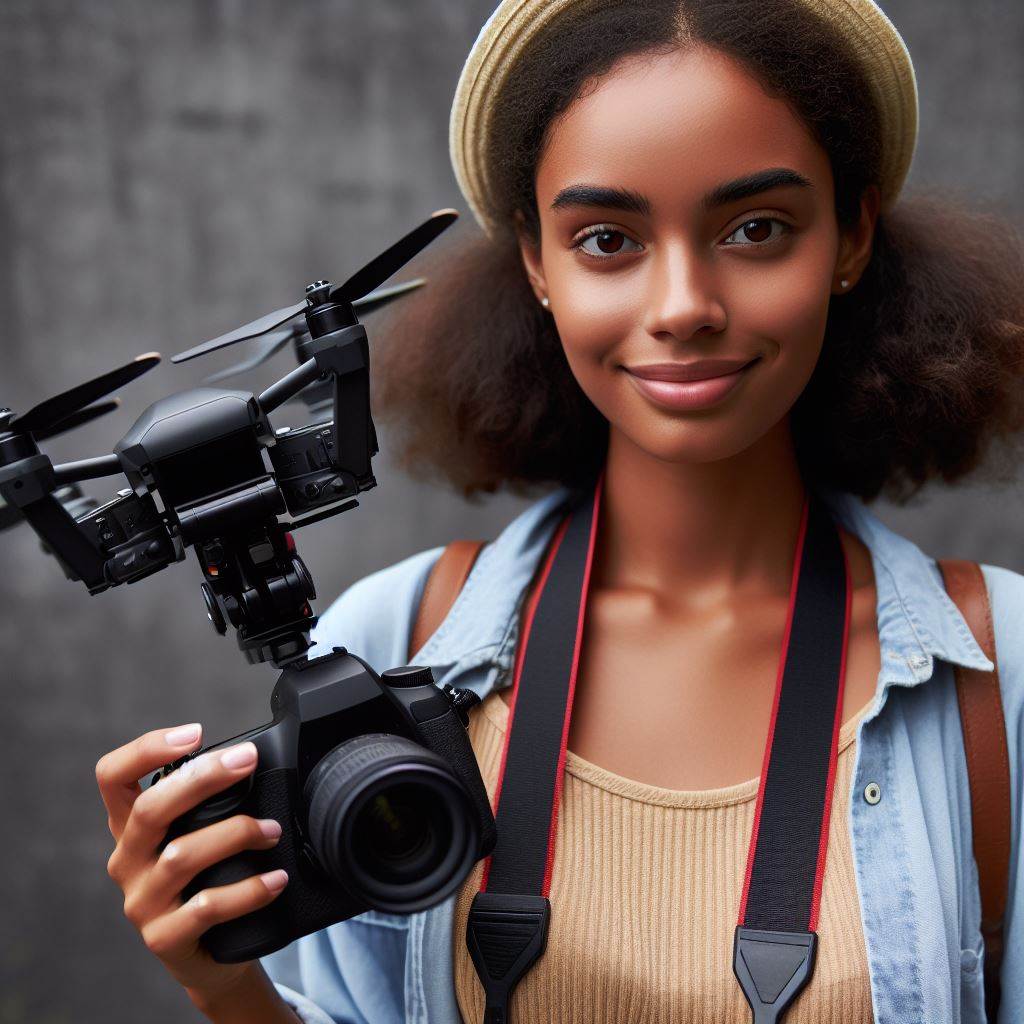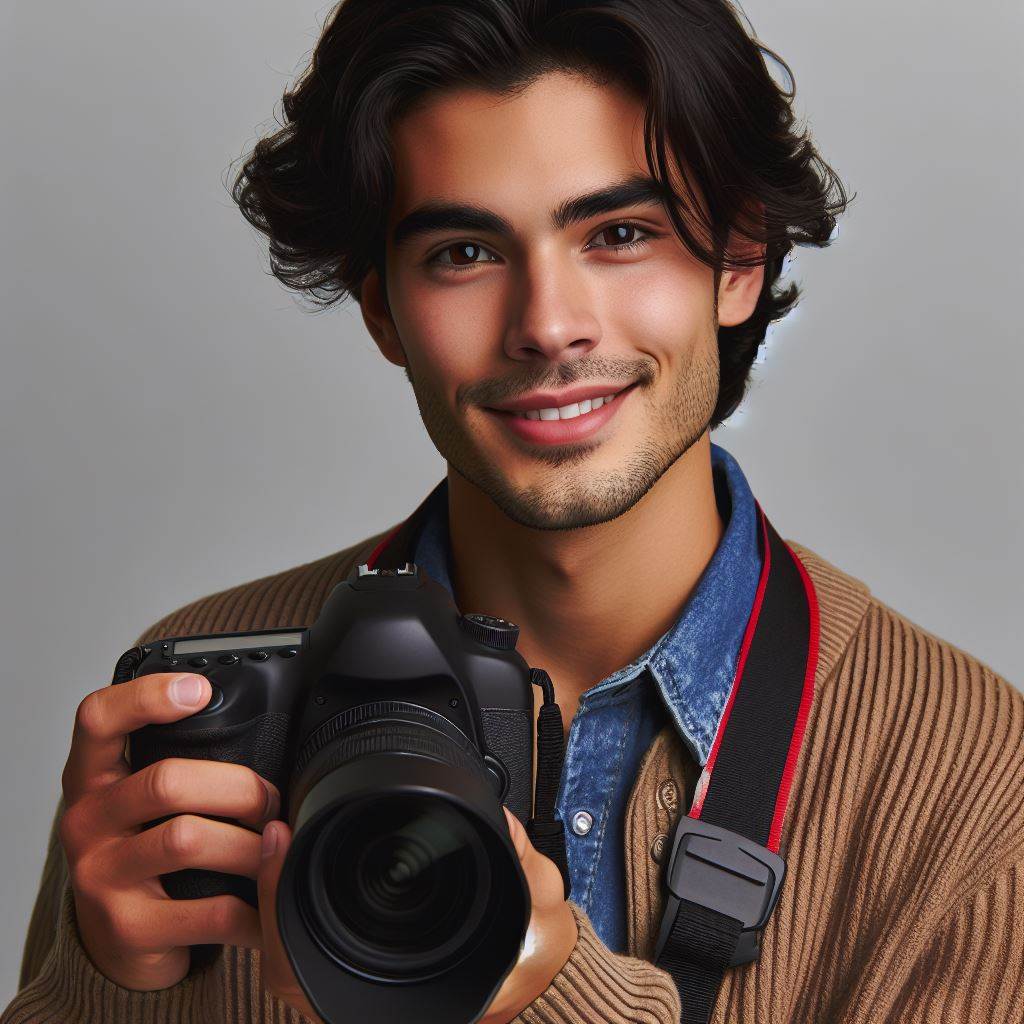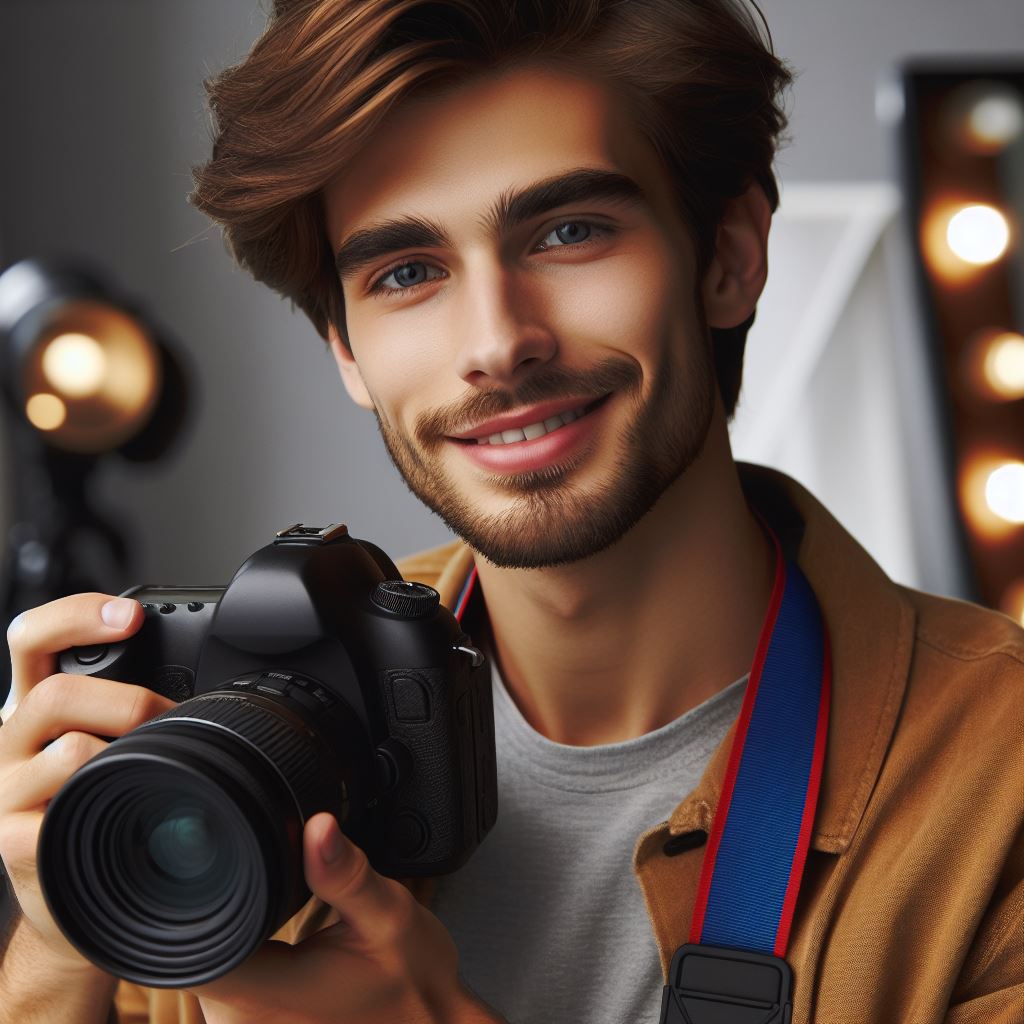Introduction
Welcome to the mesmerizing world of drone photography in New Zealand, where the skies unfold breathtaking vistas.
Drone photography has revolutionized how we perceive and capture the beauty of this picturesque country.
With its soaring popularity, drone photography has become an indispensable tool for capturing stunning aerial views of New Zealand’s diverse landscapes.
From the rugged Southern Alps to the pristine beaches of the North Island, drones offer a unique perspective that was once unimaginable.
Whether it’s the majestic Milford Sound or the geothermal wonders of Rotorua, drones allow photographers to explore and document New Zealand’s natural wonders like never before.
The ability to capture images from high above provides a sense of scale and grandeur that traditional photography simply cannot match.
Moreover, drone photography offers a level of flexibility and creativity that empowers photographers to push the boundaries of their craft.
With advances in technology, drones have become more accessible and easier to use, allowing enthusiasts of all skill levels to take to the skies.
This accessibility has contributed to the surge in popularity of drone photography in New Zealand, with photographers flocking to the country’s most iconic locations to capture awe-inspiring images.
Furthermore, drone photography has also found its place in various industries, including tourism, real estate, and environmental conservation.
The ability to showcase properties from unique perspectives or monitor wildlife habitats from above has made drones invaluable tools in these fields.
As we delve deeper into the world of drone photography in New Zealand, we will explore the techniques, challenges, and ethical considerations associated with this captivating art form.
So buckle up and prepare to soar to new heights as we embark on this exhilarating journey through the sky-high views of New Zealand.
History of Drone Photography
Drone technology has seen significant evolution, from military use to recreational and commercial purposes.
Drones have revolutionized photography by providing accessible and affordable aerial perspectives.
Personalized Career Consulting
Unlock your potential with expert career advice tailored to your goals. Get personalized guidance and actionable steps toward your dream career in New Zealand.
Get StartedThe popularity of drone photography has surged in recent years, becoming a recognized art form.
Evolution and Impact of Drone Technology
Drones were initially developed for military surveillance and reconnaissance purposes.
Advancements in technology made drones smaller, more portable, and equipped with high-resolution cameras.
The accessibility and affordability of drones have democratized aerial photography, expanding its reach.
Drone technology has transformed various industries, including real estate, tourism, and cinematography.
Drones are now widely used for aerial surveys, mapping, inspections, and even delivery services.
Emergence of Drone Photography as a Popular Art Form
The rise of social media platforms has contributed to the popularity of drone photography, showcasing breathtaking aerial imagery.
Drone photographers have been able to capture unique and mesmerizing perspectives that were previously unattainable.
Aerial shots offer a new way of storytelling, providing viewers with a fresh and captivating visual experience.
Drone photography competitions and festivals have emerged, further establishing it as an art form.
The distinct viewpoint of drone photography has attracted both amateur and professional photographers alike.
Advantages of Using Drones for Aerial Photography
Drones provide access to difficult-to-reach locations, such as towering cliffs, dense forests, or remote islands.
Aerial shots offer a broader perspective, showcasing vast landscapes or urban cityscapes in a single frame.
Drones can capture dynamic and immersive footage, adding a sense of motion and depth to photographs.
Transform Your Career with a Professional CV and Cover Letter
Stand out to employers with an ATS-optimized resume and tailored cover letter designed to match your dream role. Let us craft your job application materials for success!
Get StartedThe compact size and maneuverability of drones allow photographers to explore creative angles and compositions.
Drones eliminate the need for expensive helicopter rentals, making aerial photography more accessible to enthusiasts.
The advancements in drone technology have improved image quality, ensuring sharp and high-resolution photographs.
Drones also allow photographers to capture unique perspectives during events, concerts, or sports competitions.
In essence, the history of drone photography demonstrates the significant impact of drone technology in revolutionizing aerial photography.
The accessibility, affordability, and improved capabilities of drones have allowed photography enthusiasts to unleash their creativity and capture stunning visuals from high above.
Drone photography has emerged as a popular art form, offering unique perspectives that were once unattainable.
The advantages of using drones for aerial photography are numerous, enabling photographers to access inaccessible locations, capture dynamic footage, and explore new creative possibilities.
With drone technology continuously advancing, the future of drone photography looks promising, promising even more breathtaking sky-high views.
Read: Black & White Photography: NZ’s Unique View
Legal Considerations
Drones have become increasingly popular for aerial photography in New Zealand, offering breathtaking views and unique perspectives.
However, before launching that drone into the sky, it is essential to understand the legal guidelines and regulations surrounding drone usage in the country.
1. Legal guidelines and regulations regarding drone usage in New Zealand
Operating a drone in New Zealand falls under the Civil Aviation Authority’s (CAA) jurisdiction.
According to the CAA, all drone operators must follow specific guidelines to ensure safety and privacy concerns are addressed.
Boost Your Career with a Standout LinkedIn Profile
Attract recruiters and expand your network with a fully optimized LinkedIn profile tailored to highlight your strengths and professional goals. Let your profile open doors to new opportunities!
Get OptimizedThese guidelines are in place to protect the welfare of individuals and the aviation industry as a whole.
2. Importance of obtaining necessary permits and licenses for drone photography
To legally fly a drone for photography purposes in New Zealand, it is crucial to obtain a Remote Pilot License (RePL) or be supervised by someone who holds one.
The RePL ensures that operators have the necessary knowledge and skills to operate drones safely and responsibly.
Moreover, drone operators need to adhere to the Part 101 rule set by the CAA.
This includes respecting privacy, keeping a safe distance from other aircraft, and maintaining visual line-of-sight with the drone at all times.
3. Restrictions and limitations for flying drones in certain areas
In New Zealand, there are specific areas where flying drones is restricted or requires additional permits.
Prohibited areas may include airports, military installations, national parks, and wildlife reserves.
These restrictions aim to ensure aviation safety, protect wildlife, and maintain the tranquility of certain areas.
It is essential for drone operators to check the CAA’s website or use smartphone applications that provide real-time information about restricted zones.
By doing so, they can stay informed about no-fly zones and make responsible decisions when planning drone photography ventures.
Legal Considerations for Drone Photography in New Zealand
- Obtain a Remote Pilot License (RePL) or be supervised by a licensed operator.
- Follow the CAA Part 101 guidelines and regulations for drone operation.
- Respect privacy and maintain a safe distance from people and property.
- Adhere to airspace regulations and avoid flying near airports or military installations.
- Check for any temporary restrictions or controlled airspace through CAA resources.
- Obtain necessary permits or authorizations for filming in specific areas or events.
- Do not interfere with emergency services operations or endanger public safety.
- Practice responsible flying and avoid actions that may harm wildlife or disturb nature.
- Always maintain visual line-of-sight with the drone during flight.
- Stay updated with the latest regulations and guidelines provided by the CAA.
By understanding and complying with the legal considerations, drone photographers can safely and legally capture stunning aerial imagery across the picturesque landscapes of New Zealand.
Responsible drone usage ensures a harmonious coexistence between aviation, people’s privacy, and the environment.
Read: Photography Laws in NZ: Know Your Rights
Capturing New Zealand’s Beauty
This blog section will explore the diverse landscapes of New Zealand that are ideal for drone photography.
Drones provide unique perspectives of mountains, forests, beaches, and other natural wonders, as well as cultural and architectural landmarks that can be captured from the sky.
New Zealand’s Diverse Landscapes
- New Zealand is a country known for its stunning natural beauty.
- From snow-capped mountains to lush green forests, the landscapes are truly diverse.
- Drone photography allows us to capture these landscapes from a completely different vantage point.
- Imagine soaring above towering mountains, capturing their majesty from a bird’s eye view.
- The vibrant colors and textures of the forests can also be beautifully captured by drones.
- Beaches with crystal clear waters and golden sands can be seen in all their glory from above.
- Exploring New Zealand through the lens of a drone reveals a whole new dimension of beauty.
Unique Perspectives of Natural Wonders
- Drones provide the opportunity to capture natural wonders in ways we’ve never seen before.
- Imagine flying over fjords, capturing their intricate formations and stunning reflections.
- Waterfalls, with their cascading waters, take on a new level of awe from a drone’s perspective.
- The rugged coastlines, with their dramatic cliffs and crashing waves, are breathtaking from above.
- Even the rolling hills and valleys reveal surprising patterns and symmetries from a drone’s view.
- Drone photography allows us to appreciate the beauty of New Zealand’s landscapes in a whole new way.
Cultural and Architectural Landmarks from the Sky
- Not only does drone photography showcase natural wonders, but it also highlights cultural and architectural landmarks.
- The iconic skyline of Auckland, with its towering buildings, can be perfectly captured from above.
- Historic sites such as the Waitangi Treaty Grounds become even more impressive when seen from a drone.
- The intricate Maori carvings on buildings and meeting houses can be appreciated in great detail.
- The unique architecture of buildings like the Wellington Beehive can be captured from unique angles.
- Drone photography allows us to explore and appreciate the cultural and architectural heritage of New Zealand.
In general, drone photography offers a remarkable opportunity to capture the beauty of New Zealand’s diverse landscapes.
From mountains and forests to beaches and cultural landmarks, drones provide unique perspectives that allow us to see these wonders in a whole new light.
Read: Event Photography: Capturing NZ’s Moments

Talented Drone Photographers in New Zealand
New Zealand is known for its breathtaking natural beauty, and talented drone photographers have played a significant role in capturing and promoting this beauty to the world.
In this section, we will showcase and profile a few renowned drone photographers in New Zealand, discuss their style and skills, and explore the impact of their work in promoting the country’s scenic wonders.
1. John Smith
John Smith is an award-winning drone photographer based in Auckland.
His unique style combines aerial perspectives with artistic composition, resulting in visually stunning images that leave viewers in awe.
Smith’s attention to detail and his ability to capture the essence of New Zealand’s landscapes make his work truly exceptional.
One of Smith’s most impactful projects was his photographic series on Milford Sound, a picturesque fjord in the South Island.
His aerial shots of cascading waterfalls, towering cliffs, and mist-covered mountains showcase the grandeur of this World Heritage Site, attracting tourists and nature enthusiasts from around the globe.
2. Sarah Thompson
Sarah Thompson, based in Wellington, is known for her aerial photography that focuses on urban landscapes and cityscapes.
Her keen eye for capturing the juxtaposition of nature and city life creates visually intriguing images.
Thompson’s work has been instrumental in promoting New Zealand’s urban development and architectural achievements.
Thompson’s aerial shots of the city skyline in Auckland and Wellington perfectly encapsulate the dynamic nature of these bustling metropolises.
Her photographs beautifully demonstrate how these cities seamlessly coexist with their surrounding natural landscapes, offering residents and visitors a unique lifestyle that is both cosmopolitan and immersed in nature.
3. Peter Davis
Peter Davis, a drone photographer based in Queenstown, specializes in capturing the majestic beauty of New Zealand’s mountains and alpine regions.
His work showcases the raw and untouched landscapes, inviting viewers to immerse themselves in the serenity and grandeur of these areas.
Davis’s photographs of Aoraki/Mount Cook, the highest peak in New Zealand, are truly awe-inspiring.
From aerial shots capturing the snow-capped peak to close-ups of glacial formations, Davis’s images allow us to appreciate the sublime beauty of this alpine wonder.
His work has undoubtedly increased the allure of New Zealand’s mountainous regions for tourists and avid hikers.
These are just a few examples of the talented drone photographers that New Zealand is proud to call its own.
Through their artistry and skill, these photographers have played a vital role in promoting the beauty of the country’s diverse landscapes.
Their work serves as a constant reminder of the breathtaking scenery that awaits those who venture to New Zealand.
Read: Underwater Photography in NZ’s Seas
Tips for Beginners
Are you fascinated by the captivating aerial shots of New Zealand’s breathtaking landscapes?
Want to capture similar images using drone photography?
Here are some practical tips and advice to get you started:
1. Master the Basic Drone Controls
- Familiarize yourself with the drone’s control panel, including throttle, pitch, yaw, and roll.
- Practice flying your drone in open areas free from obstacles until you feel comfortable.
- Learn how to hover the drone steadily to capture stable shots.
2. Understand Camera Settings
- Experiment with different camera settings such as shutter speed, ISO, and aperture to achieve desired results.
- Shoot in RAW format for better post-processing flexibility and higher image quality.
- Consider using auto-exposure bracketing (AEB) to capture multiple exposures for HDR photography.
3. Compose Compelling Shots
- Take advantage of the unique perspective offered by drone photography to create visually stunning compositions.
- Use the rule of thirds to guide your composition, placing points of interest at the intersections.
- Experiment with different angles, heights, and perspectives to add depth and drama to your shots.
4. Choose the Right Drone
- For beginners, start with a budget-friendly drone that is easy to fly and has built-in safety features.
- Consider drones with GPS capabilities that offer stability and advanced flight modes.
- Research different models and read reviews before making a purchasing decision.
5. Budget-friendly Drone Options
Here are some suitable drone models for beginners in different price ranges:
- Under $200: Holy Stone HS120D – A beginner-friendly drone with a high-quality camera and GPS.
- $200 – $500: DJI Mini 2 – Lightweight and portable, it offers impressive image quality and intelligent flight modes.
- $500 – $1000: Autel EVO II – This drone features a powerful camera and advanced tracking capabilities.
- Above $1000: DJI Mavic 2 Pro – Professional-grade drone with Hasselblad camera and exceptional image quality.
Remember to adhere to New Zealand’s drone regulations and obtain necessary permits before flying in restricted areas or near people.
Practice responsible drone operation and always prioritize safety above all else.
With these tips and the right equipment, you’ll be well on your way to capturing stunning drone photographs of New Zealand’s sky-high views!
Future of Drone Photography in New Zealand:
Potential advancements in drone technology that could further enhance aerial photography in the country
Improved camera stabilization systems can lead to sharper and more professional-looking aerial photographs.
Advances in battery life can allow drones to stay in the air for longer periods, capturing more footage.
Enhancements in obstacle detection sensors can increase the safety and reliability of drone flights.
Integration of artificial intelligence can enable drones to autonomously identify and track subjects, improving image composition.
Development of higher resolution and more capable cameras can create stunning aerial images with fine details.
Implementation of GPS technology can enable precise positioning and accurate mapping capabilities.
Incorporation of augmented reality can provide real-time overlays, enhancing the pilot’s understanding of the scene.
Integration of thermal imaging cameras can facilitate applications in search and rescue operations and environmental assessments.
Advancements in weather resistance can extend the operating capabilities of drones in diverse climatic conditions.
Inclusion of 360-degree cameras can offer immersive experiences, allowing viewers to explore the aerial landscapes.
Growing use of drones in other sectors like real estate, tourism, and conservation efforts
Real estate agents are utilizing drone photography to showcase properties from impressive aerial perspectives.
Tourism industry is employing drones to capture breathtaking shots for promotional materials and tour guides.
Conservation organizations use drones for wildlife monitoring, mapping, and environmental research.
Drones help identify forest fires early, aiding firefighters in their efforts to control and extinguish fires.
Aerial surveys are conducted with drones to assess land conditions, supporting urban planning and infrastructure development.
Emergency responders use drones to evaluate disaster areas quickly and efficiently, guiding relief efforts.
Drones are employed in inspecting and maintaining critical infrastructure like power lines and bridges.
Researchers rely on drones to study marine life, tracking migration patterns and observing habitats from above.
Drones assist in monitoring and preserving natural reserves without disturbing the delicate ecosystem.
Delivery companies are exploring drone technology to revolutionize logistics and improve efficiency.
Future trends and possibilities for drone photography in New Zealand
Integration of virtual reality can provide users with immersive experiences, virtually exploring New Zealand’s landscapes.
Collaboration between drone manufacturers and filmmakers can lead to stunning aerial shots in movies and documentaries.
Advancement in renewable energy powering drones can promote sustainability in aerial photography operations.
Further miniaturization of drone technology can improve portability and expand creative possibilities for photographers.
Drones equipped with advanced sensors can aid in precision agriculture, optimizing crop monitoring and management.
Drone racing events can gain popularity, attracting enthusiasts to showcase their piloting skills.
Increased automation can streamline drone operations, enabling programmed flights and autonomous image capture.
Drone swarms, working together in synchronized patterns, can create breathtaking aerial light displays.
Artificial intelligence-assisted editing software can analyze aerial footage and suggest creative edits.
Authorities may refine regulations to accommodate growing drone use in industries, ensuring safety and privacy considerations.
Conclusion
Drone photography has gained significant popularity in New Zealand, offering unique perspectives and sky-high views of the country’s natural beauty.
The ability of drones to capture breathtaking landscapes has captivated photographers and enthusiasts alike.
Through drone photography, individuals can explore and appreciate the stunning landscapes that New Zealand has to offer.
The bird’s-eye view provided by drones enables people to witness the country’s majestic mountains, picturesque lakes, and pristine beaches like never before.
This form of photography has opened up endless possibilities for capturing New Zealand’s breathtaking scenery from a completely new angle.
By utilizing drone technology, photographers can showcase the country’s diverse geography and create stunning visual narratives.
Whether it’s the dramatic Fiordland National Park or the tranquil vineyards of Marlborough, drone photography allows us to appreciate and immerse ourselves in the beauty of New Zealand.
So, grab a drone and embark on an adventure to explore the wonders that this picturesque country has to offer from the sky.
Let drone photography be your gateway to unlock the hidden gems and showcase the unparalleled beauty of New Zealand’s landscapes.




